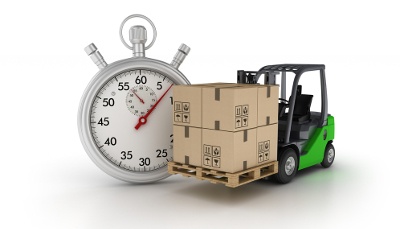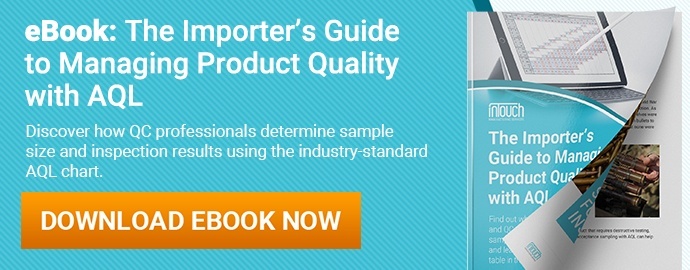 Can you imagine trying to determine the quality of a shipment of bullets by firing them one after another? How would you know what quantity to test in the total order if the method destroys each bullet you test?
Can you imagine trying to determine the quality of a shipment of bullets by firing them one after another? How would you know what quantity to test in the total order if the method destroys each bullet you test?
The U.S. military faced this exact problem during World War II. They wanted to check the quality of their munitions so that they could be confident the bullets would function properly in the field. But they didn’t want to test so many that there were none left to actually ship to the warfront. The solution they developed was MIL-STD-105, an important standard using acceptable quality limits, or acceptable quality levels (AQL). Several other acceptance sampling standards later developed from that original military standard—ANSI ASQ Z1.4 being the one most inspectors use today.
Let’s look at why AQL sampling is popular among QC inspectors and in which cases AQL might not be appropriate.
Advantages of using AQL sampling for QC inspection
You might be wondering why inspectors wouldn’t check 100 percent of an order, rather than checking a sample. Or maybe you think it’s best to inspect a fixed portion of the total quantity, like 10 or 20 percent of the units. But sampling with AQL offers some advantages that continue to make AQL sampling a popular approach to managing product quality for the majority of importers manufacturing consumer products (related: The Importer’s Guide to Managing Product Quality with AQL [eBook]).
Sampling saves time during inspection
Inspecting every unit in an order of goods offers the greatest transparency and oversight. But 100-percent inspection takes time. And if you’re like most importers, you’ve probably agreed with your customers to meet certain deadlines.  The time needed to inspect every unit can require longer production and shipping lead times, especially when a team outside the factory will be conducting inspection.
The time needed to inspect every unit can require longer production and shipping lead times, especially when a team outside the factory will be conducting inspection.
Factory managers, in particular, often prefer inspection of a sample because of the time and human resources needed to check 100 percent. Inspection occurring after the packaging stage requires factory workers to repack every unit before shipping. Factory staff see inspection of a sample to be less disruptive because they need to commit less time to assisting with the process.
In the case of low-cost items, it isn’t practical to inspect 100 percent of an order. International sporting goods companies like Nike and Adidas, for example, produce millions of garments per year through contract manufacturers in Asia. It’s difficult for them to justify inspecting every unit coming off production lines while still meeting shipping deadlines. Inspecting a sample takes relatively less time while still offering valuable insight into the average quality and conformance of an order.
Inspecting a sample is cost effective
The cost of inspection is typically directly related to the time needed to inspect. For example, third-party inspection companies usually bill services in “man-days”, a daily rate for an inspector to remain at a factory checking and testing an order. A longer or more thorough inspection may require you to send more QC staff to a factory for longer. The more days, or inspectors, needed on-site, the higher the cost of inspection.
 Another cost consideration is the inspection and testing methods themselves. Just as inspecting bullets can include destructive testing, so too can inspecting other types of products. Accurately checking fabric density in a garment, for example, requires inspectors to cut a piece of fabric from a unit to measure grams per inch (GSM). It’s usually best to conduct destructive testing on a sample of an order—often just 3-5 units—because the testing destroys the sample.
Another cost consideration is the inspection and testing methods themselves. Just as inspecting bullets can include destructive testing, so too can inspecting other types of products. Accurately checking fabric density in a garment, for example, requires inspectors to cut a piece of fabric from a unit to measure grams per inch (GSM). It’s usually best to conduct destructive testing on a sample of an order—often just 3-5 units—because the testing destroys the sample.
AQL sampling, coupled with a carton pulling procedure that selects a truly representative sample from a production lot, offers a statistically significant result showing the average order quality. Most importers rely on sampling for inspection because they can get a reasonable idea of how closely an order meets their expectations without paying to inspect every unit.
AQL sampling offers clear inspection results
Since acceptance sampling is based on statistics, it produces inspection results that are relatively clear and easy to interpret. AQL sets specific limits for the number of defects found in a particular sample size. The inspection result is generally “fail” when the number of defects found exceeds a particular limit. And you can make a relatively easy decision to accept or reject based on this result (related: How AQL Sampling Affects Your Product Inspection Results).
It’s often hard to get the same clarity from inspecting a fixed percentage of an order. For example, how would you decide how many defects to accept in 10 percent of an order? You’d have to create your own standard, which could vary across different products and order quantities. You’ll typically spend less time reviewing and trying to understand an inspection report based on an established standard like AQL.
AQL standards are highly flexible
AQL is highly flexible because it allows you to customize your quality tolerance for your product and for the three types of quality defects: critical, major and minor. Consumer products often use AQLs of 0, 2.5 and 4.0 for critical, major and minor defects, respectively. You might require stricter AQLs for high-value items, such as luxury watches. You might also have customers with strict standards that require you to use lower AQLs. AQL sampling allows you to choose the quality tolerances that are best for you.
Many importers find they need to revise their quality tolerances (AQLs) when initial inspection results don’t align with expectations. Such is the case when an inspection result is “pass” that the importer feels should be “fail” or vice versa. AQLs may also need fine tuning for new products. It can take some time to make appropriate adjustments that are fair to you and your supplier. And as the importer, you have the freedom to adjust the AQLs used so that subsequent inspections yield more accurate results (related: What QC Inspection Results Do and Don’t Mean for Your Shipment).
Disadvantages of AQL sampling for QC inspection
Inspecting a sample using AQL is the best approach to managing product quality for a wide range of importers. But AQL isn’t ideal for every importer (related: When Should You Use AQL for Inspection?). Due to some disadvantages with using AQL, there are instances where you might want to inspect 100 percent of an order or use a custom sample size outside of AQL for inspection.
Risk of overlooking issues outside the inspection sample
As with all sampling methods, there’s a chance a supplier will ship defective products if they’re not found within the pulled sample. The chance of this happening is greatly reduced by setting a stricter tolerance. But AQL can’t absolutely guarantee no defective items will ship. Despite this shortcoming, using AQL is usually still better than inspecting a fixed percentage because it’s more efficient.
Some importers insist on inspecting every unit in an order because they can’t accept any quality issues. For example, premium fashion brands selling goods at a much higher margin but manufacturing in lower order volumes might consider 100-percent inspection. The high cost for such a thorough inspection is offset by the hundreds or thousands of dollars consumers often spend for a single unit.
Time constraints may not allow for an AQL sample
Sometimes inspecting a sample with AQL can take more time than allowed. For instance, to check a particular AQL sample size may take 2 days, but you might need the product inspection completed in one day due to a tight shipping deadline. In this case, inspection of a custom sample size within 1 day is likely more effective than applying AQL.
With proper planning you can almost always avoid having to decide between delaying shipping and adequately inspecting your products. And as we’ve seen, the greater efficiency offered by sampling tends to accommodate tighter deadlines than alternatives like 100-percent inspection.
Conclusion
By inspecting a sample of an order with AQL, you can apply black and white standards to a production lot without inspecting every unit. AQL provides you with statistically significant insight into your order in a clear, cost-effective and efficient manner so that you can make an informed shipping decision quickly.
Though not always appropriate for every situation, more QC professionals continue to use AQL sampling than any other process. And now that you know what makes AQL such a valuable approach to inspection, you can begin to use it to gain greater control of your order quality and supply chain.
What other reasons do you have to use or avoid AQL for inspection? Let us know in the comments section below!







